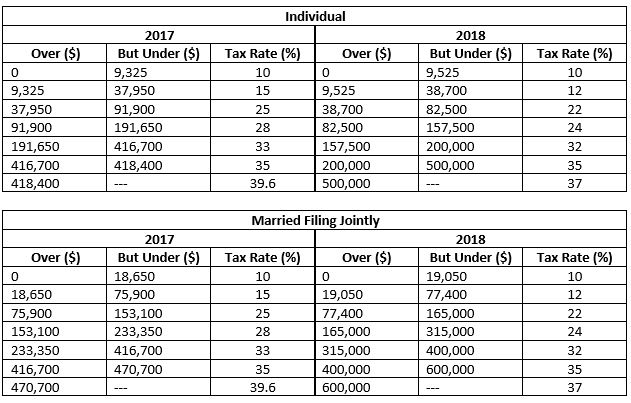This means Dr. Zhao would contribute over $6,682.37 ($16,000 - 9,317.63) more per year to the SURS RSP than the SURS Traditional Plan.
Example 3 – Supplemental Savings
Assume the same facts as Example 1, except Dr. Zhao chooses to add the $6,682.37/year to a supplemental retirement savings plan (403b). We will also assume the same hypothetical portfolio used in Example 2. At the end of 25 years, she has an account balance of about $600,000. Assuming the same annuity rates as Example 2, she could receive an estimated additional income of $30,000/year, or $2,500/month, from her 403b account.
Together, these three examples illustrate the impact the salary cap has on the outcome. For someone whose income exceeds the salary cap, selecting the Traditional or Portable plan results in the missed opportunity to receive matching contributions.
Investment Control
For those who choose the RSP, one feature of the plan is the ability to control investment decisions. Voya is the current plan custodian. Through their platform you can allocate your account balance between a mix of different investment choices. One option is to select a custom mix of Core Funds. Core Funds are a set of low-cost, index funds designed to track a variety of investment benchmarks. Participants can choose a custom combination of Core Funds in proportions that they deem most appropriate for their situation, but are self-responsible for managing the balances between the Core Funds over time. An alternative to the Core Funds is the Lifetime Income Strategy (LIS) Fund. The LIS is an investment fund that is managed to automatically adjust the risk level of the fund based on your planned retirement date.
As illustrated in the above examples, choosing the RSP provides participants with the potential for maximizing pension payments in retirement. However, the downside is that you also bear the investment risk that comes along with your investment selections, which, depending on market and investment performance, can directly impact the future balance of the RSP and thus, the size of the pension payments which can be generated by that RSP balance.
If you prefer to have the employer retain the investment risk and receive a guaranteed income, then the Traditional or Portable may be a more suitable option. These plans are professionally managed by the investment staff with SURS. No matter the outcome of investment performance, your ultimate pension benefit is guaranteed.
While investment returns in the future cannot be predicted based on past performance, historical data generally shows more favorable returns for those who are invested for a long period of time[iv]. This suggests someone entering employment earlier in their career could benefit from a long period of time to allow investments to compound and grow in value, which may favor the Retirement Savings Plan.
Someone nearing the end of their career may not have a long-time horizon to ride out the ups and down of investment performance. In that case, a new employee in their later working years may favor enrolling in the Traditional or Portable plan.
Vesting & Flexibility
The trend has been toward a more mobile workforce, where multiple job changes throughout one’s career are not uncommon. Academia is not immune to this trend. Therefore, you should consider the flexibility and portability of benefits in the event of an employment change. Here is a summary:
The Traditional plan has the least flexibility for departure or refund.
Requires 10-years of service credit to vest.
If you are fully vested and leave SURS-covered employment, you can:
Wait and draw benefits at full retirement age, or
Take a refund of your own contributions plus interest. Employer matching contributions are forfeited with this choice.
If you are not yet vested and leave SURS-covered employment, you are only entitled to a refund of your own contributions. Employer contributions are forfeited unless you later vest.
The Portable plan offers some benefits of the defined-benefit plan while maintaining some flexibility in case of departure.
Requires 10-years of service credit to vest.
If you are fully vested and leave SURS-covered employment, you can:
Wait and draw benefits at full retirement age, or
Take a refund of your contributions, employer matching contributions, plus interest.
If you are not yet vested and leave SURS-covered employment, you are only entitled to a refund of your own contributions. Employer contributions and interest are also refundable after 5 years of service credit.
The Retirement Savings Plan offers the most flexibility.
You vest with 5 years of service credit.
If you are fully vested and leave SURS-covered employment, you can take a refund of your contributions, the employer contributions, and growth and interest of the account.
If you are not fully vested and leave SURS-covered employment, you can take a refund of your contributions and growth and interest of the account. Employer contributions are forfeited.
For all plans, eligibility for retiree health insurance requires you to fully vest. Taking the full refund option for any pension will forfeit retiree health insurance benefits.
Survivor & Legacy Benefits
In exchange for reduced flexibility, the Traditional plan offers the most generous survivor benefits. Survivors would receive 2/3rds of your accrued monthly retirement benefit, payable to your eligible survivor. This benefit comes at no extra cost to you.
Example 4 – Survivor Benefits, Traditional
Following the same facts as example 1, assume that Dr. Zhao had selected the SURS Traditional pension with a base benefit of $5,333/month. If she were to die shortly after retiring, her spouse would be entitled to a survivor benefit of $3,555/month for life. At the death of Dr. Zhao and her spouse, no additional survivor benefits would be payable to children or other heirs.
The Portable plan only offers a default survivor benefit if you die before reaching retirement. In that case, the benefit is 50% of your accrued retirement benefit (as compared to 2/3rds under the Traditional plan). Upon retirement, you can choose to purchase a survivor benefit greater than 50% at a cost to you of reduced lifetime payments.
Example 5 – Survivor Benefits, Portable
Following the same facts as example 1, assume that Dr. Zhao had selected the SURS Portable pension with a base benefit of $5,333/month. If she were to die shortly after retiring, her spouse would not be entitled to any survivor benefit. At retirement, Dr. Zhao could instead choose to take a reduced monthly pension to add a survivor benefit for 50%, 75% or 100% of the original pension.
The RSP does not provide an automatic lifetime survivor payment. You or your survivor are always eligible for a refund of your own contributions and earnings. After 1.5 years of service, employer matching and related earnings are also refundable to survivors. Your survivor may choose a lifetime payment with this refund, with the amount of such payment based on your account balance at that time.
FINAL NOTES
This guide was written for those enrolling in SURS now and are therefore in Tier II SURS plans. This applies to those enrolled on or after January 1, 2011. If you first enrolled in SURS prior to this date and are a Tier I participant, some of these plan provisions may be different.
I’ll note that many clients consider the RSP a refuge from the troubled finances of the State of Illinois. The idea is that funds are held separately, in-trust, and therefore safe from the creditors of the State. This is true. By federal law, RSP funds must be deposited in a timely manner to your account, including employer matching. State matching of the other pension plans has not always been made timely, which is a big part of the pension underfunding problem.
However, this advantage of the RSP does not make the Traditional or Portable plans “unsafe”. The Illinois constitution states that pension benefits cannot be diminished, which guarantees participants their right to future benefits. Previous attempts at pension reform have tested and found this guarantee to be true. Unlike municipalities and territories, Detroit and Puerto Rico being recent examples, a State may not go bankrupt and therefore discharge the indebtedness of pension through bankruptcy. While it is yet to be seen how the state will solve its current financial crisis, it must pay the promised bill of pensions.
Regardless of whichever plan you choose, I would also encourage you to fund additional savings beyond your mandatory pension contributions. While the SURS system does provide generous pension benefits, the pension was not designed to cover all your needs beyond working years. Additionally, depending on your work history, you may not qualify for social security benefits as you do not participate in the social security system while actively participating in SURS. Even if you have a past earnings history in social security, your social security benefits may be reduced as a result of the benefits you earned while participating in SURS. While there are many savings options out there, the 403b and 457 savings plans offered through the University are often a good place to start. We generally recommend supplemental savings of at least 7% and ideally 10% of earnings beyond your required SURS contributions.
CONCLUSION
Navigating this initial decision on retirement plan choice will have a lasting impact on your future financial security. Compounding the importance of this decision, it must be made in the flurry of other important activities of moving, starting a new job, selecting other benefits and adapting to your new role. If you need help interpreting these decisions in your own financial life or want the peace of mind that you have considered the entire picture, please let us know. Many of our clients are members or retirees of SURS. We have helped hundreds of clients through the complexities of pension decisions. If you would like our perspective or professional opinion on your own decisions, Contact Us today!
Further Reading
SURS Traditional - SURS Traditional Guide
SURS Portable - SURS Portable Guide
SURS Retirement Savings Plan - SURS RSP Guide














 us, getting organized to complete our annual Income Tax Return is a chore. We would prefer to expend the minimum amount of effort to get the job done. Luckily, many records such as income figures are provided to us by others (W-2’s, 1099’s etc). In addition, minimizing your taxes due often involves documenting charitable gifts for itemized deductions. Maximizing the benefits from those charitable gifts does require a bit more work on your part.
While you may be aware that you need to keep records to deduct charitable gifts you make, you may not realize that it is fairly common not to receive IRS-compliant documentation from nonprofit organizations. Therefore, it is up to you to know the rules yourself and confirm you receive the correct documents. Below is an outline of what to keep when you make Charitable Gifts (by donating Cash, Check, via Credit Card, etc):
For Gifts under $250:
You need to have a record showing the name of the organization, date and amount of the contribution. One or the other of these will work:
us, getting organized to complete our annual Income Tax Return is a chore. We would prefer to expend the minimum amount of effort to get the job done. Luckily, many records such as income figures are provided to us by others (W-2’s, 1099’s etc). In addition, minimizing your taxes due often involves documenting charitable gifts for itemized deductions. Maximizing the benefits from those charitable gifts does require a bit more work on your part.
While you may be aware that you need to keep records to deduct charitable gifts you make, you may not realize that it is fairly common not to receive IRS-compliant documentation from nonprofit organizations. Therefore, it is up to you to know the rules yourself and confirm you receive the correct documents. Below is an outline of what to keep when you make Charitable Gifts (by donating Cash, Check, via Credit Card, etc):
For Gifts under $250:
You need to have a record showing the name of the organization, date and amount of the contribution. One or the other of these will work:




 Action 2: Request credit reports from at least one of the three Credit Reporting Agencies. Review your report for any lines of credit that you don’t recognize. The report will have instructions on disputing your account if needed. Reports may be accessed for free at
Action 2: Request credit reports from at least one of the three Credit Reporting Agencies. Review your report for any lines of credit that you don’t recognize. The report will have instructions on disputing your account if needed. Reports may be accessed for free at